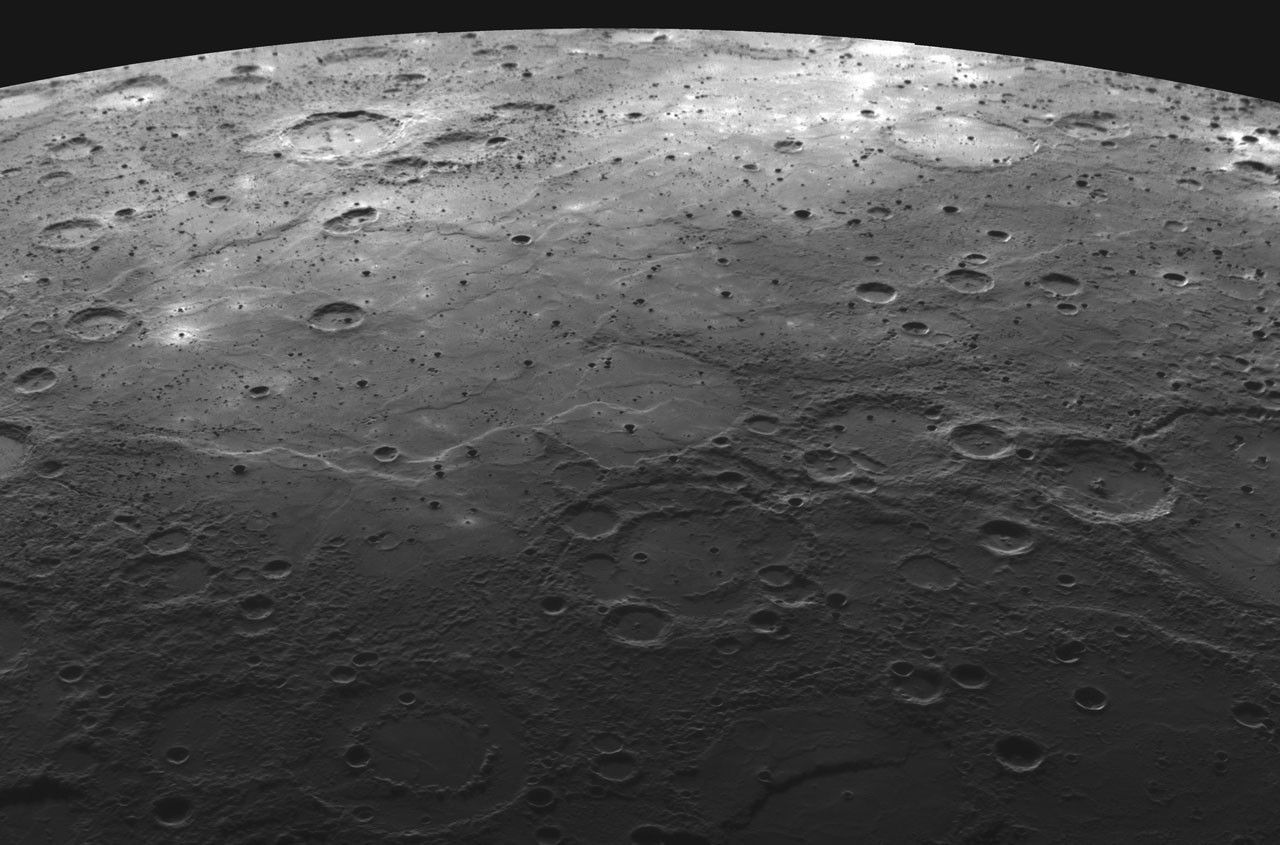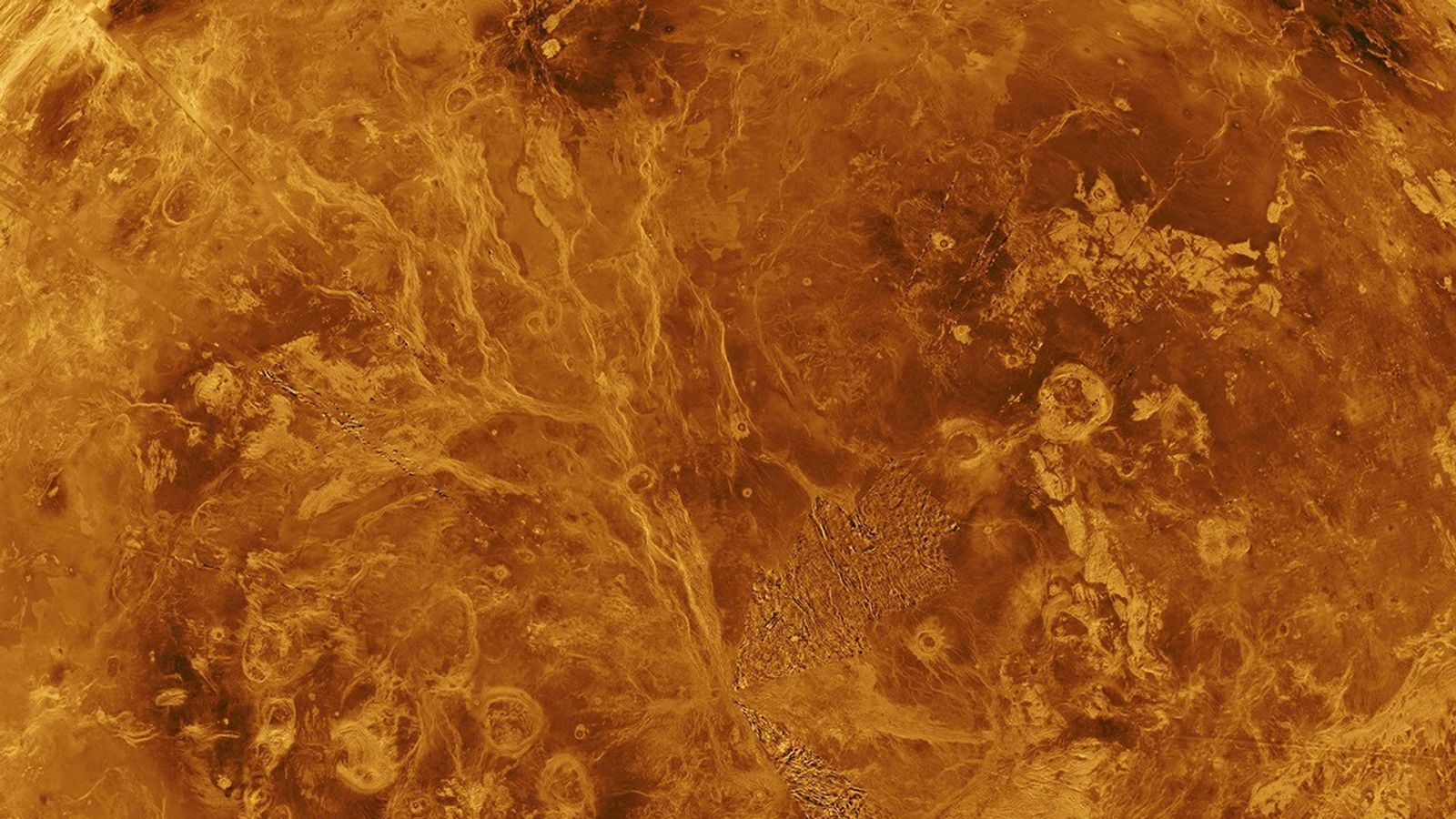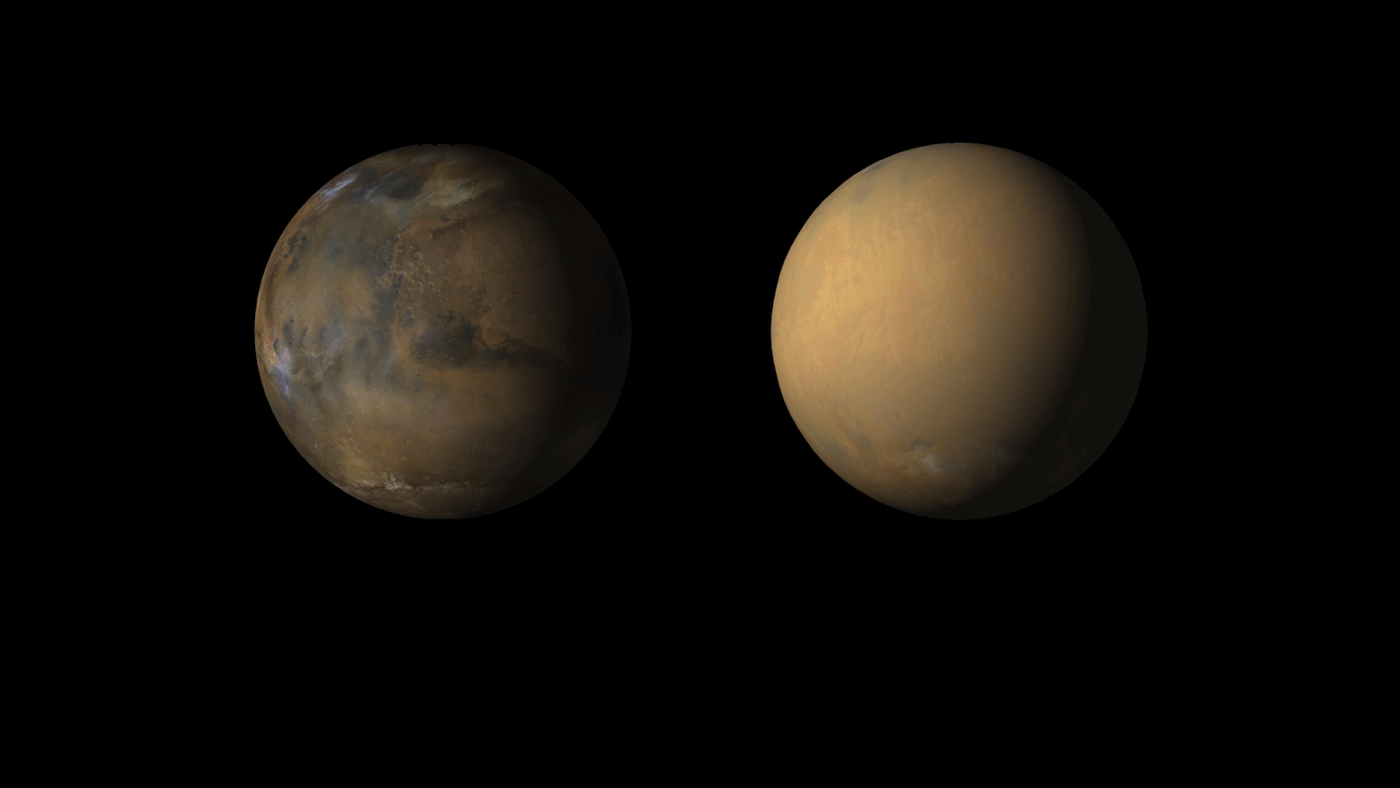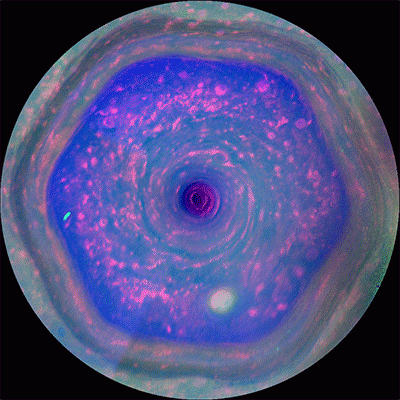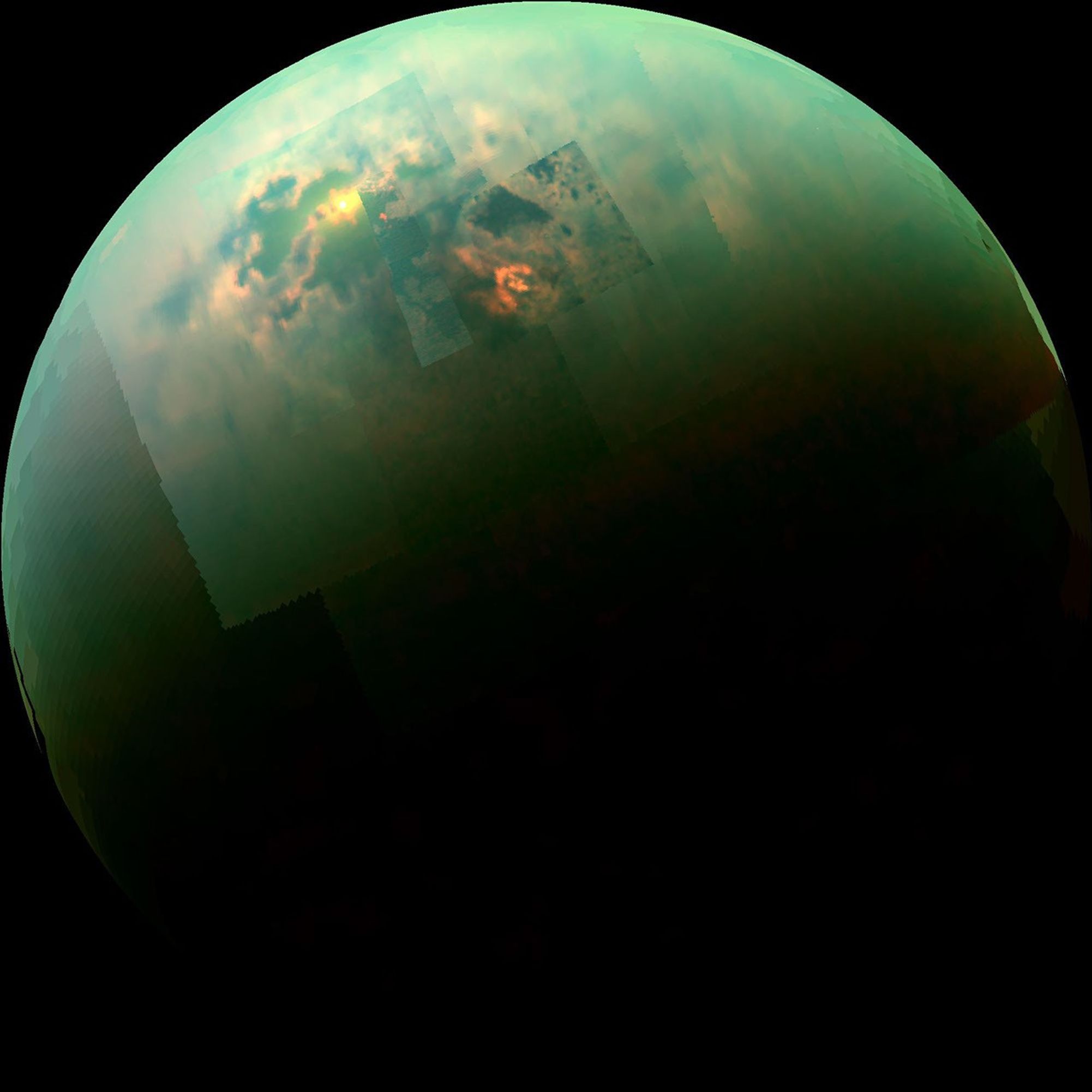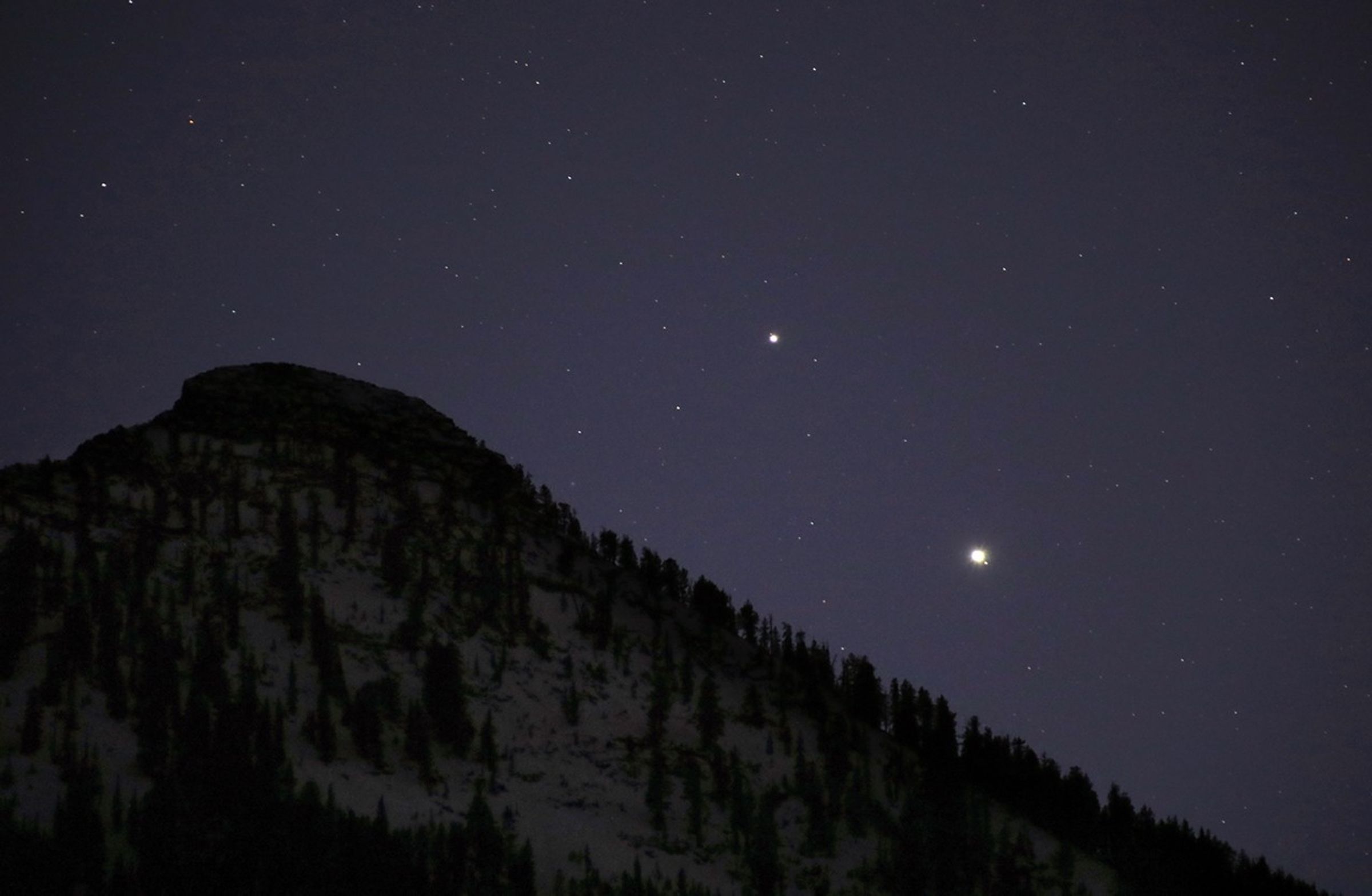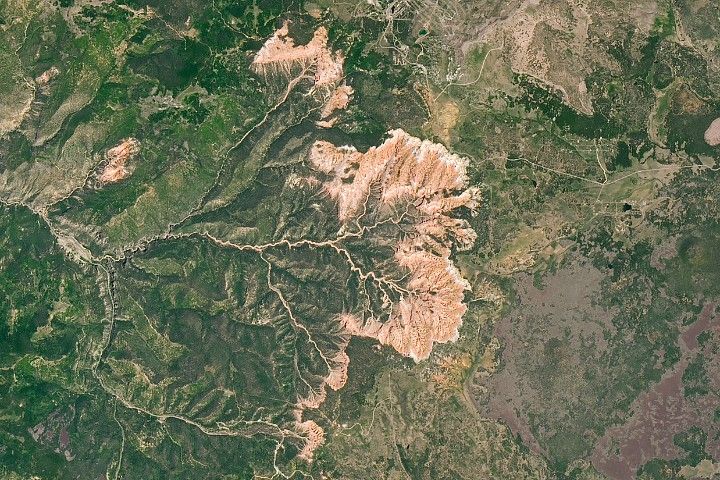Earth is a dynamic and stormy planet with everything from brief, rumbling thunderstorms to enormous, raging hurricanes, which are some of the most powerful and destructive storms on our world. But other planets also have storm clouds, lightning – even rain, of sorts. Let’s take a tour of some of the unusual storms in our solar system and beyond.
1. At Mercury: A Chance of Morning Micrometeoroid Showers and Magnetic ‘Tornadoes’
How about a micrometeoroid shower to start your day? Mercury, the planet nearest the Sun, is scorching hot, with daytime temperatures of more than 800 degrees Fahrenheit (about 430 degrees Celsius). It also has weak gravity – only about 38% of Earth's – making it hard for Mercury to hold on to an atmosphere.
Its barely there atmosphere means Mercury doesn’t have dramatic storms, but it does have a strange "weather" pattern of sorts: it’s blasted with micrometeoroids, or tiny dust particles, usually in the morning.
It also has magnetic “tornadoes” – twisted bundles of magnetic fields that connect the planet’s magnetic field to space. NASA’s Mercury MESSENGER spacecraft encountered the magnetic twisters during its second flyby Oct. 6, 2008.
2. At Venus: Earth’s ‘Almost’ Twin is a Hot Mess
Venus is often called Earth's twin because the two planets are similar in size and structure. But Venus is the hottest planet in our solar system, roasting at about 900 degrees Fahrenheit (480 degrees Celsius) under a suffocating blanket of sulfuric acid clouds and a crushing atmosphere.
Add to that the fact that Venus has lightning, maybe even more than Earth. "Not a very good place to vacation, that is for sure," said Christopher Russell, a NASA-sponsored scientist on the European Space Agency's Venus Express mission, the team that found the lightning.
In visible light, Venus appears bright yellowish-white because of its clouds. Also, Japanese researchers found a giant streak-like structure in the clouds based on observations by the Akatsuki spacecraft orbiting Venus.
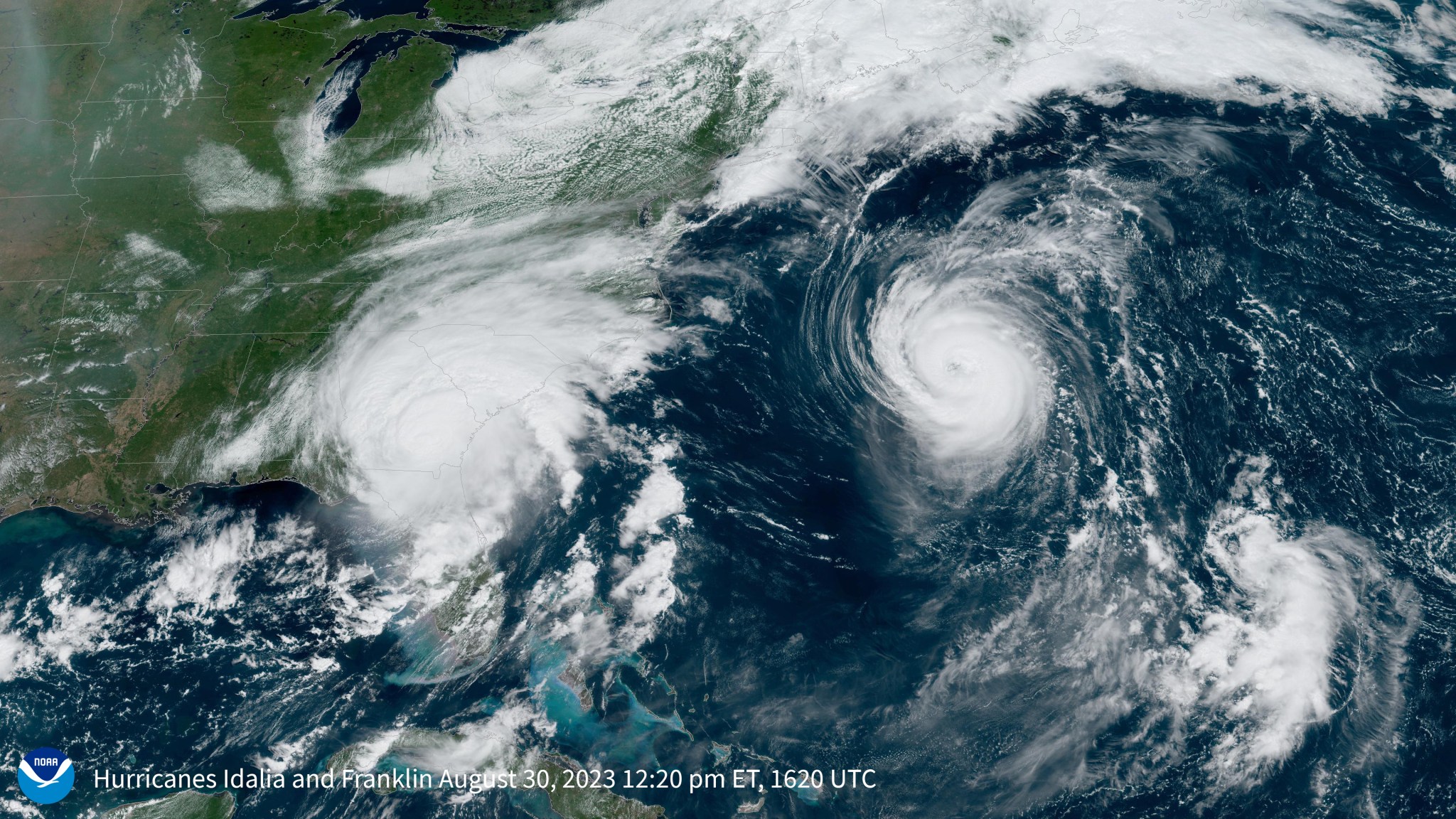
3. At Earth: Multiple Storm Hazards Likely
Earth has lots of storms, including thunderstorms, blizzards and tornadoes. Tornadoes can pack winds over 300 miles per hour (480 kilometers per hour) and can cause intense localized damage.
But no storms match hurricanes in size and scale of devastation. Hurricanes, also called typhoons or cyclones, can last for days and have strong winds extending outward for 675 miles (1,100 kilometers). They can annihilate coastal areas and cause damage far inland.
The Galveston Hurricane of 1900 was the deadliest in weather disaster in United States history. According to NOAA, storm tides of 8 to 15 feet inundated Galveston Island, and the nearby Texas coast. These tides were largely responsible for the 8,000 deaths (estimates range from 6,000 to 12,000) attributed to the storm.
4. At Mars: Hazy with a Chance of Dust Storms
Mars is infamous for intense dust storms, including some that grow to encircle the planet. In 2018, a global dust storm blanketed NASA's record-setting Opportunity rover, ending the mission after 15 years on the surface.
Mars has a thin atmosphere of mostly carbon dioxide. To the human eye, the sky would appear hazy and reddish or butterscotch colored because of all the dust suspended in the air.
Dust will be an issue for future missions to Mars as well. It could affect electronics and mechanical systems, as well as the health of astronauts, although Martian dust storms are not really as intense as the one that stranded fictional astronaut Mark Watney (Matt Damon) in the 2015 movie "The Martian."
Besides Earth, Mars is the only planet with weather stations. Mars Curiosity rover has the latest weather from Gale crater. And the Perseverance rover has the forecast for Jezero crater.
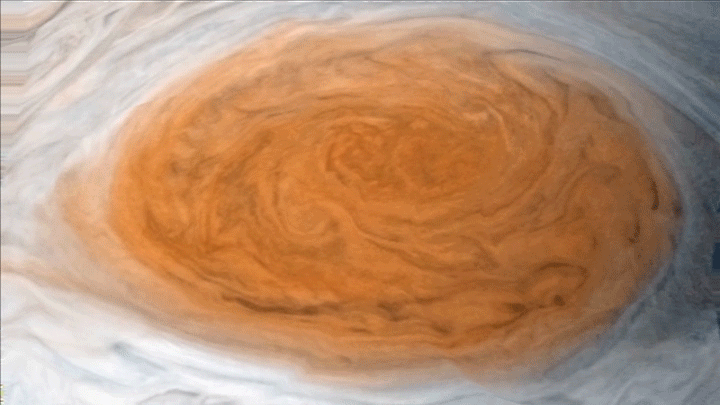
5. At Jupiter: A Shrinking Icon
It’s one of the best-known storms in the solar system: Jupiter’s Great Red Spot. It’s raged for at least 300 years, but it’s been shrinking for a century and a half. Nobody knows for sure, but it's possible the Great Red Spot could eventually disappear.
NASA's Juno spacecraft is giving scientists new insights on the storm. “Juno data indicate that the solar system's most famous storm is almost one-and-a-half Earths wide, and has roots that penetrate about 200 miles (300 kilometers) into the planet's atmosphere," said Scott Bolton, Juno's principal investigator.
In the 20th century, three smaller ovals merged to form the Little Red Spot, about half the size of its larger cousin. With no solid surface to slow them down, Jupiter's spots can survive for many years.
6. At Saturn: A Storm Chasers Paradise
Saturn has one of the most extraordinary atmospheric features in the solar system: a hexagon-shaped cloud pattern at its north pole. The hexagon is a six-sided jet stream with 200-mile-per-hour winds (about 322 kilometers per hour). Each side is a bit wider than Earth and multiple Earths could fit inside. In the middle of the hexagon is what looks like a cosmic belly button, but it’s actually a huge vortex that looks like a hurricane.
Storm chasers would have a field day on Saturn. Part of the southern hemisphere was dubbed "Storm Alley" by scientists on NASA's Cassini mission because of the frequent storm activity the spacecraft observed there. The storms can rage for years, so there’s no rush to catch them. At least one storm chased itself: In 2010 and 2011, scientists witnessed a storm that churned its way around the planet until it ran into its own tail and sputtered out.
7. At Titan: Methane Rain and Dust Storms
Earth isn’t the only world in our solar system with bodies of liquid on its surface. Saturn’s moon Titan has rivers, lakes and large seas. It’s the only other world with a cycle of liquids like Earth’s water cycle, with rain falling from clouds, flowing across the surface, filling lakes and seas and evaporating back into the sky.
But there is a big difference: On Titan, the rain, rivers and seas are made of methane instead of water.
Data from the Cassini spacecraft also revealed what appear to be giant dust storms in Titan’s equatorial regions, making Titan the third solar system body, in addition to Earth and Mars, where dust storms have been observed.

8. At Uranus: A Polar Storm and...What’s That Smell?
Uranus has long been the butt of jokes and some recent research may make things worse.
Scientists were trying to solve a puzzle about clouds on the ice giant planet: What were they made of? When Voyager 2 flew by in 1986, it spotted few clouds. This was due in part to the thick haze that envelops the planet, as well as Voyager's cameras not being designed to peer through the haze in infrared light.
But in 2018, NASA’s Hubble Space Telescope snapped an image showing a vast, bright, stormy cloud cap across the north pole of Uranus. Also in 2018, researchers using the Gemini North telescope on Hawaii's Mauna Kea discovered that clouds on Uranus are made up of hydrogen sulfide – the stinky, rotten-egg smelling gas. So go ahead, make another joke, but the joke might be on you: the planet's name is actually pronounced YUR-uh-nuss, not yur-AY-nuss.
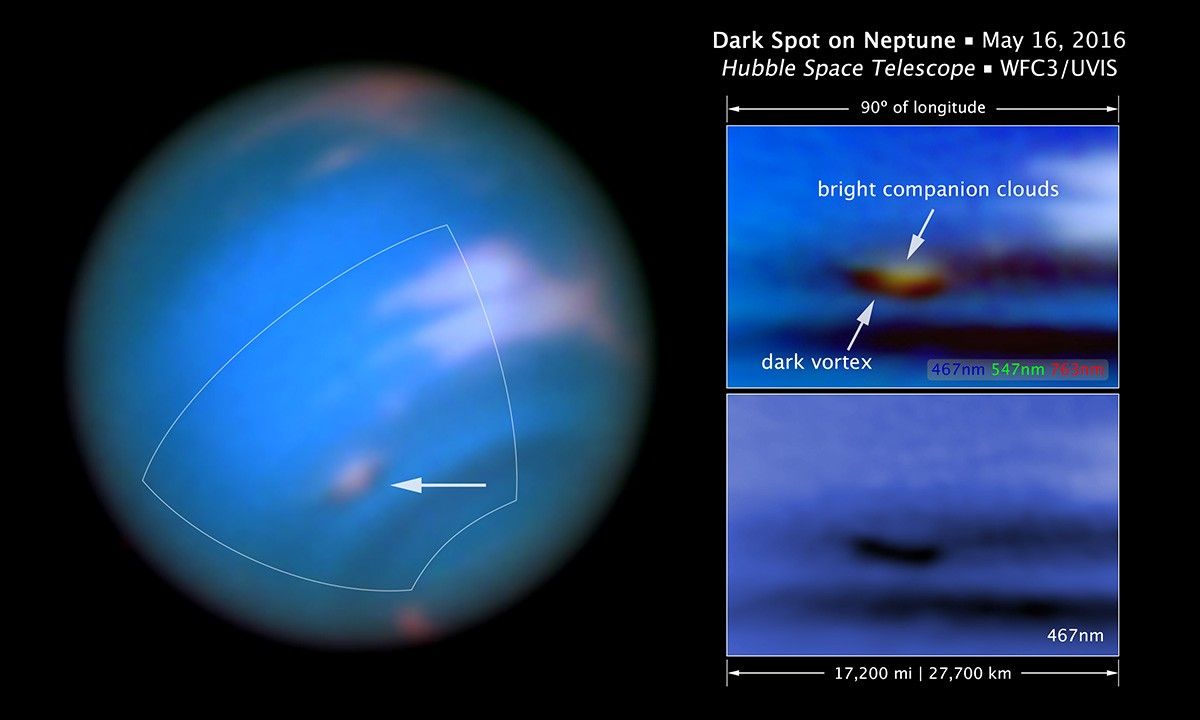
9. At Neptune: Methane Clouds and Vanishing Storms
Neptune is our solar system's windiest world. Winds whip clouds of frozen methane across the ice giant planet at speeds of more than 1,200 miles per hour (2,000 kilometers per hour) – about nine times faster than winds on Earth.
Neptune also has huge storm systems. In 1989, NASA’s Voyager 2 spotted two giant storms on Neptune as the spacecraft zipped by the planet. Scientists named the storms “The Great Dark Spot” and “Dark Spot 2.”
Five years later, in 1994, NASA’s Hubble Space Telescope took images of Neptune from its vantage point in Earth orbit. Scientists hoped to see the storms again, but both had vanished. Scientists now think new storms crop up on Neptune every four to six years, with each storm lasting up to six years.
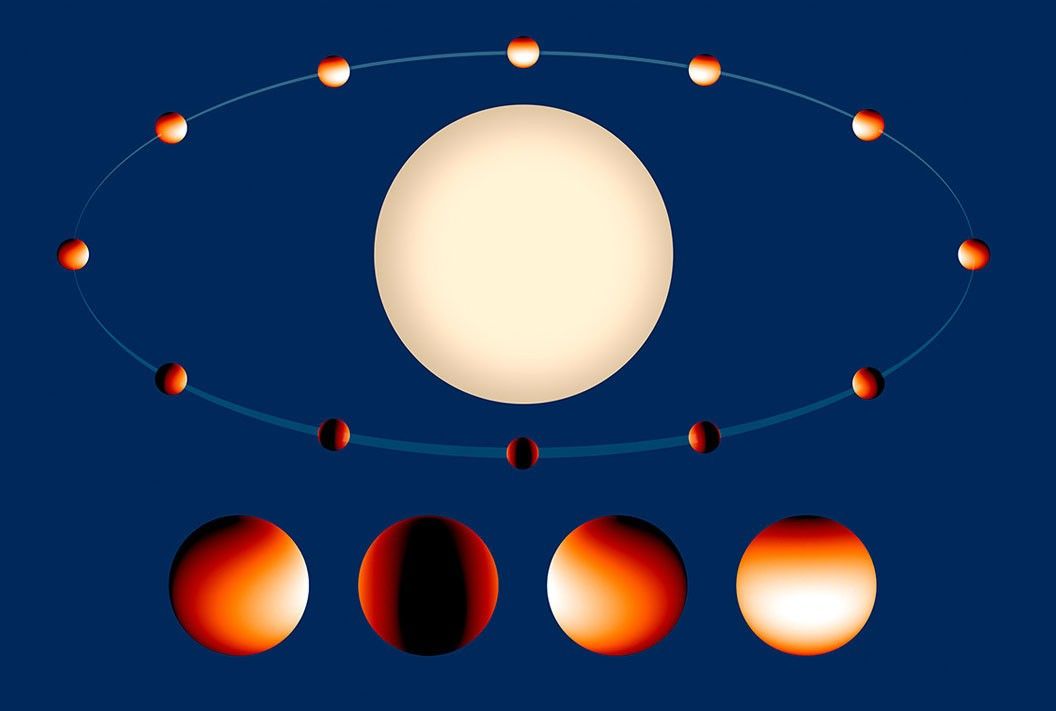
10. It’s Not Just Us: Extreme Weather in Another Solar System
Scientists using NASA’s Hubble Space Telescope made a global map of the glow from a turbulent planet outside our solar system. The observations show the exoplanet, called WASP-43b, is a world of extremes. It has winds that howl at the speed of sound, a 3,000-degree-Fahrenheit (1,600-degree-Celsius) day side, and a pitch-black night side where temperatures are cooler, but still a sizzling 1,000 degrees Fahrenheit (540 degrees Celsius).
Discovered in 2011, WASP-43b is located 260 light-years away. It’s about the same size as Jupiter. The planet is too distant to be photographed, but astronomers detected it by observing dips in the light of its parent star as the planet passes in front of it.





























